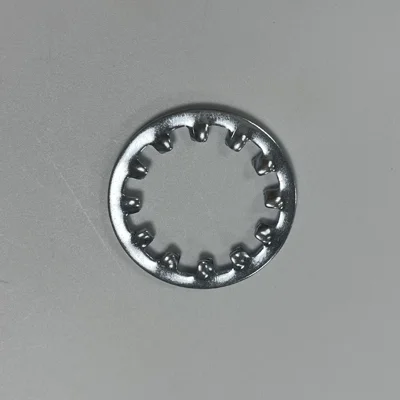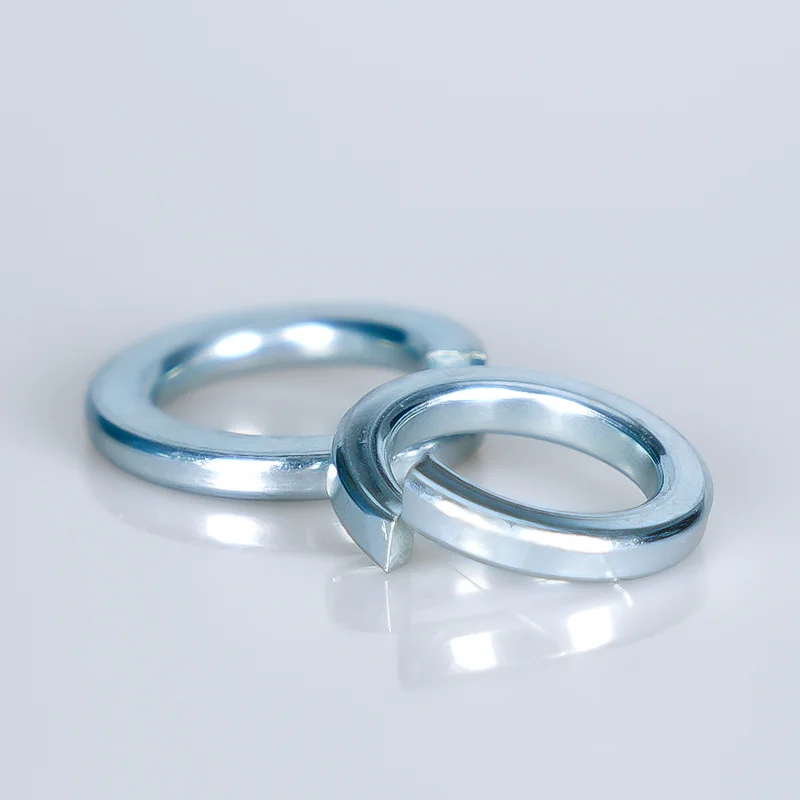caTEGORIES
Tags
What Are the Cost Implications of Flat, Lock, Spring, and Specialty Washers in Manufacturing

Posted: September 04, 2025
Categories: News
Introduction
In large-scale manufacturing, small parts often create the biggest debates. A classic example is the humble washer. Flat, lock, spring, or even the more specialized Belleville or wave washers—these tiny discs of metal or nylon can influence not only assembly quality but also overall production costs.
On paper, a washer seems simple and cheap. But when multiplied by a million units, or when failure causes machine downtime, the cost implications suddenly become very real. At Qewitco, we’ve spent nearly two decades supplying European and global manufacturers with fasteners, including a wide range of washers. From automotive lines in Germany to heavy equipment assembly in Malaysia, we’ve seen the “true” price of a washer go far beyond the per-piece quote.
So what should purchasing managers and engineers consider when choosing washer types? Let’s break it down by type, cost drivers, and real-world scenarios.
Overview of Washer Types and Their Roles
Flat Washers
Flat washers are the most basic form: a thin disc with a central hole. Their main role is to spread load and protect surfaces from bolt heads or nuts digging in. In terms of cost, they’re the cheapest to produce. Carbon steel flat washers, for example, can cost less than $0.01 per piece in high volumes.
In low-stress environments—electronics housings, office furniture, or consumer appliances—flat washers are perfect. The cost implication here is clear: lowest unit price, minimal performance risk.
Lock Washers
Lock washers are designed to prevent loosening. Split lock washers, toothed washers, and serrated types bite into the surface to resist vibration. Their unit cost is slightly higher, sometimes 2–3 times that of a flat washer depending on material.
The bigger issue is performance consistency. In industries like railways or heavy trucks, if a bolt works loose, the repair cost dwarfs the few cents saved by skipping a lock washer. On the flip side, some engineers argue (and you’ll find heated threads online about this) that split lock washers aren’t always reliable. That creates a double cost implication: you pay more upfront, but you might still need secondary locking methods.

Spring Washers
Spring washers (also called disc springs) are not just spacers—they maintain tension. Think of them as tiny shock absorbers for bolted joints. They’re more complex to produce, which shows up in the price tag. Typically 3–5 times the cost of a flat washer, especially in stainless steel.
Why do manufacturers still use them? Because they can save thousands in reduced maintenance. For instance, a mining conveyor system in Australia fitted with spring washers had its inspection cycle extended from 6 months to 12. That halved downtime costs. Suddenly, the washer wasn’t expensive at all—it was a bargain.

Specialty Washers
Specialty washers cover a wide family: Belleville washers, wave washers, keyed washers, and insulating nylon types. These are engineered for very specific needs, like pre-load control in wind turbines or electrical insulation in power electronics.
The upfront cost is high. A precision Belleville washer can cost more than 50 cents each in stainless steel. But if it prevents turbine blade bolt loosening—which could cost tens of thousands in repairs—it pays for itself many times over. Specialty washers are rarely about unit cost; they’re about avoiding catastrophic losses.
Cost Implication Analysis
Material and Manufacturing Costs
Material choice drives washer pricing more than geometry.
Carbon steel: cheapest, widely available.
Stainless steel: 30–70% more expensive, but better corrosion resistance.
Aluminum: lighter but softer, sometimes higher in cost because of raw material volatility.
Nylon: very cheap, especially in injection molding at scale, but limited load capacity.
Manufacturing processes add layers. A flat washer can be punched at high speed, while a Belleville spring washer needs precise forming and heat treatment. That’s why the same “category” of washer can vary dramatically in cost.
Performance Benefits vs Cost
This is where cost implications become tricky. For example, a $0.05 spring washer might prevent a $500 service call. A $0.20 stainless washer could stop rust from spreading to an entire assembly line. Many purchasing teams focus on unit price, but seasoned engineers calculate in terms of “total cost of ownership.”
At Qewitco, we’ve often seen customers return after initially choosing the cheapest option. One European agricultural OEM swapped from zinc-plated flat washers to stainless because the fields they sold into were highly corrosive. Yes, stainless doubled their washer cost, but warranty claims dropped by 40%.
Failed Use or False Economy
Choosing the wrong washer isn’t just about wasted cents. It can mean failure. Split lock washers are a good case study. Some engineers swear by them, others call them “useless.” If they slip in a high-vibration setting, you face the worst of both worlds: you paid extra for them, and you still got bolt loosening.
That’s why real-world testing matters more than catalog descriptions.
Application-Driven Cost Strategy
When to Use Flat Washers
- Best in static, low-load assemblies.
- Electronics, furniture, and lightweight machinery.
- Cost implication: lowest price, but not suitable for vibration or dynamic loads.
When to Use Lock or Spring Washers
- Lock washers: good in medium-vibration environments, such as light vehicles or construction tools.
- Spring washers: ideal for high-vibration or where preload tension is critical—mining, marine, heavy trucks.
- Cost implication: higher unit price but longer intervals between maintenance and less risk of downtime.
When Specialty Washers Are Worth It
- Belleville washers: wind turbines, aerospace, heavy compression settings.
- Wave washers: electronics, motor assemblies, where space is limited but damping is needed.
- Insulating nylon washers: circuit boards, EV battery packs.
- Cost implication: very high per unit, but negligible compared to cost of failure.
Best Practices for Manufacturers
- Don’t buy on unit price alone. Always calculate the cost of downtime, maintenance, and warranty claims.
- Match washer type to environment. A spring washer in a desk chair is overkill; a flat washer in a vibrating conveyor is a liability.
- Talk to suppliers early. At Qewitco, we often co-develop washer solutions with customers—adjusting hardness levels, coatings, or custom shapes. That small engineering tweak can save big money later.
- Think lifecycle, not quarter. Procurement managers are under pressure for short-term savings, but the best plants look at 5-year operating costs.
- A small side note: once, a customer requested flat washers in brass for aesthetic reasons (they wanted the golden look on exposed fixtures). Did it cost more? Yes. Did it help them sell their premium lighting fixtures? Also yes. Not every cost implication is purely functional. Sometimes, it’s branding.
Conclusion
The cost implications of washers depend less on the catalog line and more on where and how they’re used. Flat washers may be the cheapest, but they don’t prevent loosening. Lock and spring washers come at a premium, but they extend maintenance cycles. Specialty washers carry the highest price tag, yet they often protect the most expensive assets.
At the end of the day, manufacturers should view washers not as small commodities but as insurance policies. Choosing wisely saves money in the long run—and keeps assembly lines, trucks, turbines, or lighting rigs running smoothly.
FAQs
Q1: Are lock washers always necessary in vibrating machinery?
Not always. Some engineers prefer alternative locking methods like nylon insert nuts or thread-locking adhesives. It depends on load cycles and criticality of the joint.
Q2: Why are stainless steel washers so much more expensive than carbon steel?
It comes down to raw material cost and corrosion resistance. Stainless is harder to source and process, but in harsh environments it dramatically reduces long-term costs.
Q3: Can non-metallic washers handle heavy loads?
Not really. Nylon or plastic washers are great for insulation or light assemblies, but for structural joints or heavy vibration, metal options remain the safer choice.


